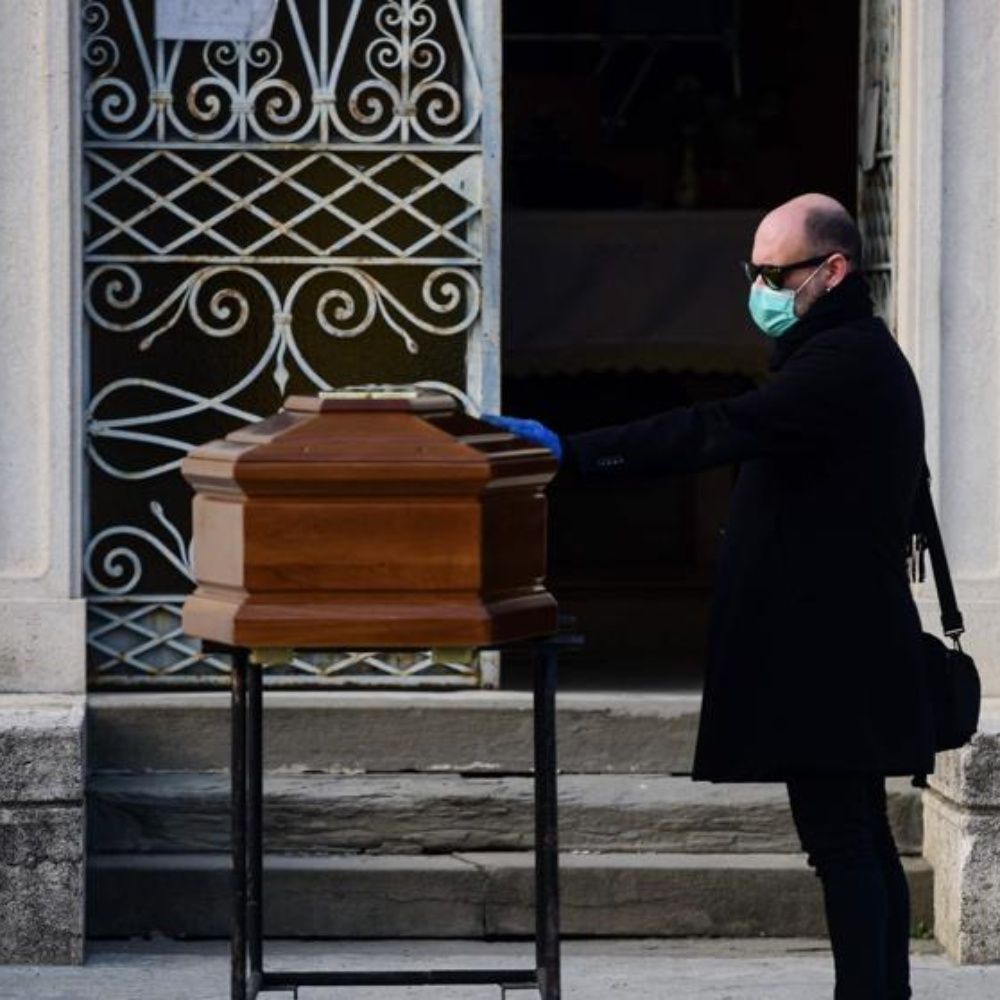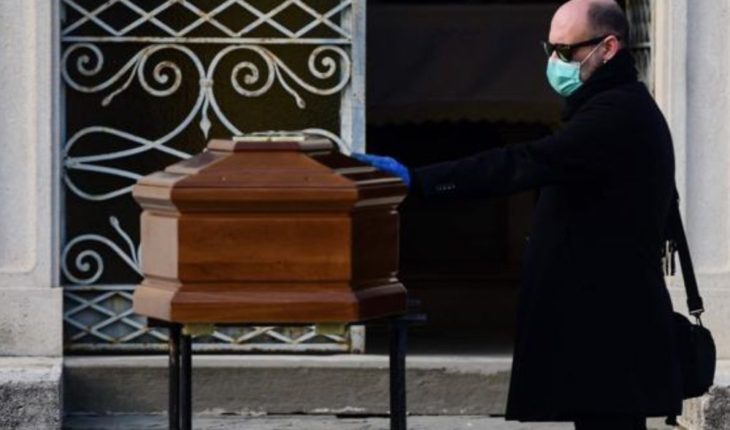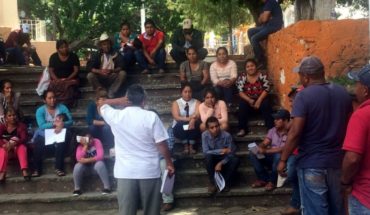
Bergamo.—The priest blessed the coffin. There were no flowers or hugs. Francesca Steffanoni and her mother left As quickly as possible from Bergamo’s main cemetery, after a farewell that lasted no more than five minutes. Bergamo is the epicentre of Italy’s most crown-hit province, Lombardy, and has recorded hundreds of deaths.
Families cannot accompany their loved ones in the final agony or hold traditional funerals. The cemeteries are so overwhelmed by the death toll that military trucks had to move 65 bodies to another city to be cremated this week. Steffanoni and his mother attended the funeral of an 82-year-old relative, a widower with heart problems, who contracted the virus. They wore masks and gloves, and kept them away.
Ailients with masks on their faces accompany the coffin of a loved one in the Monumentale cemetery in Bergamo. Photo: AP
In theory, we shouldn’t have gone. But he was one of the last relatives we had left,” Steffanoni explained.
Unofficial figures indicate that more than 600 people infected with the virus died in the province, which is stuck in the Alps and where there have been more than a quarter of the deaths in Lombardy despite the population being one tenth of the 10 millions of people living in the province.” We face the emergence of the largest COVID after Wuhan,” said Dr. Luca Lorini, director of the intensive care unit at Bergamo’s main hospital, named John Paul 23, which has 500 beds for people with the virus. Wuhan is the Chinese city where the outbreak broke out that after spreading around the world. As alarming as they may be, the figures do not reflect the magnitude of the tragedy.
Lombardy is the region most affected by coronavirus in Italy. Photo: AFP
Authorities say they do not take into account the increase in deaths in the general population who had not undergone tests to see if they had the virus. Last week, 400 people died in Bergamo and 12 neighbouring towns, four times the number of deaths recorded in the same period last year, according to the mayor of Bergamo. Only 91 had been detected in the virus. People involved in the fight against the virus — hospital officials, funeral directors, city officials and union leaders — told the Associated Press that a crisis of this magnitude could have been prevented if an area was created containment red much earlier, around February 23, as they asked. Containment measures were implemented in Bergamo only on 8 March, two weeks later, having never isolated two cities in the valley where the first outbreaks were recorded.” When the virus arrived, there were no containment measures and it spread through the valleys quickly. Some said it was just a flu. The doctors knew it wasn’t,” Lorini said.
Local newspaper L’Eco di Bergamo publishes a dozen pages with obituaries since the coronavirus spread in Italy. Bergamo is the epicenter of the outbreak in this country In normal times, a single page is enough to publish the obituaries. Photo: AP
Funeral homes were already showing an alarming increase in the number of deaths in January and February, an anomaly they reported to the authorities, according to Antonio Ricciardi, director of the local funeral association. His business held 611 funerals from March 1 to 18, when he rarely records more than 100 in a month. After the first death occurred in the neighboring town of Alzano Lombardo and other cases were confirmed on 23 February, doctors at Juan Pablo XXIII hospital created an intensive care unit dedicated exclusively to patients with the virus. Two days earlier the confinement of residents of ten southern Lombardy cities had been arranged, which was a success and served as a model for the order to remain in the houses issued by the national government on March 9. No official explanation has been given to the decision not to include Bergamo in the red zone. Eliana Como, head of the influential metallurgical syndicate FIOM, said she believes the economic importance of the region influenced the decision not to declare a red zone to the localities at the mouth of the Seriana Valley, home to the metallurgical industry and workshops Craft.
Central area of Bergamo deserted on March 17, 2020. Only two women are seen walking a dog after buying groceries in a usually congested sector. Photo: AP
I think commercial interests weighed heavily on the decision,” said Como, who lives in Bergamo.
In the fourth week of the epidemic, Lorini estimates that the actual number of infected people is five or ten times the official figure, which is 4,645 people. Currently, only people who show up in hospitals with severe symptoms and not those who are sick in their homes are examined.” We suspect that the true figure (of deaths from the virus) remains hidden,” said Francesco Alleva, spokesman for the mayor of Bergamo. “Because a lot of people die at home or in nursing facilities, without ever being examined to see if they had the virus.” That’s why the authorities insist on asking people not to leave their home. Police vehicles with loudspeakers urge people not to go out unless it’s for some greater need, such as buying groceries or going to work, if they can’t do it from home. In an effort to discourage people from leaving, Mayor Giorgio Gori suspended all public wi-fi services and arranged for the closure of betting machines in the traditional “tobaccos” (sell cigarettes and other products), which remain open.
A group of men in masks moves the coffin of a person who died by coroanvirus in Bergamo. Photo: AFP
While there are 300 new cases daily compared to 500 last weekend, Lorini said it will take at least another week to know if containment measures are working. One of the most dramatic aspects of the crisis is not being able to comfort the relatives of infected people in hospitals or go to funerals. Hospitals try to keep people informed through phone calls, but when someone agonizes, Lorini says, a visit “would be an unnecessary chance of contagion.”
It’s terrible to lose a loved one and not be able to hug them. But this is what has happened during epidemics for thousands of years and will continue to happen,” Lorini said.
When a loved one dies of the virus, their relatives cannot choose the funeral home to watch over. By government decree, the dead are buried in the clothes they had on, wrapped in sterilized blankets and placed in coffins as quickly as possible.
There is a very important psychological aspect in families who can’t see the body,” Ricciardi said. “Without a corpse, it’s hard to assimilate death.”
The drama of the city becomes visible in the local newspaper, L’Eco di Bergamo, which in normal times devotes a page to the obituaries and now needs nine, ten or 11.





